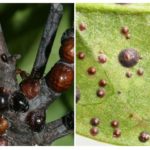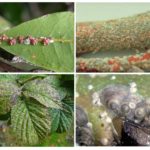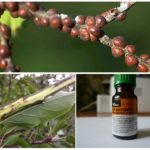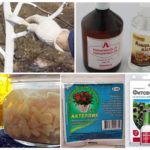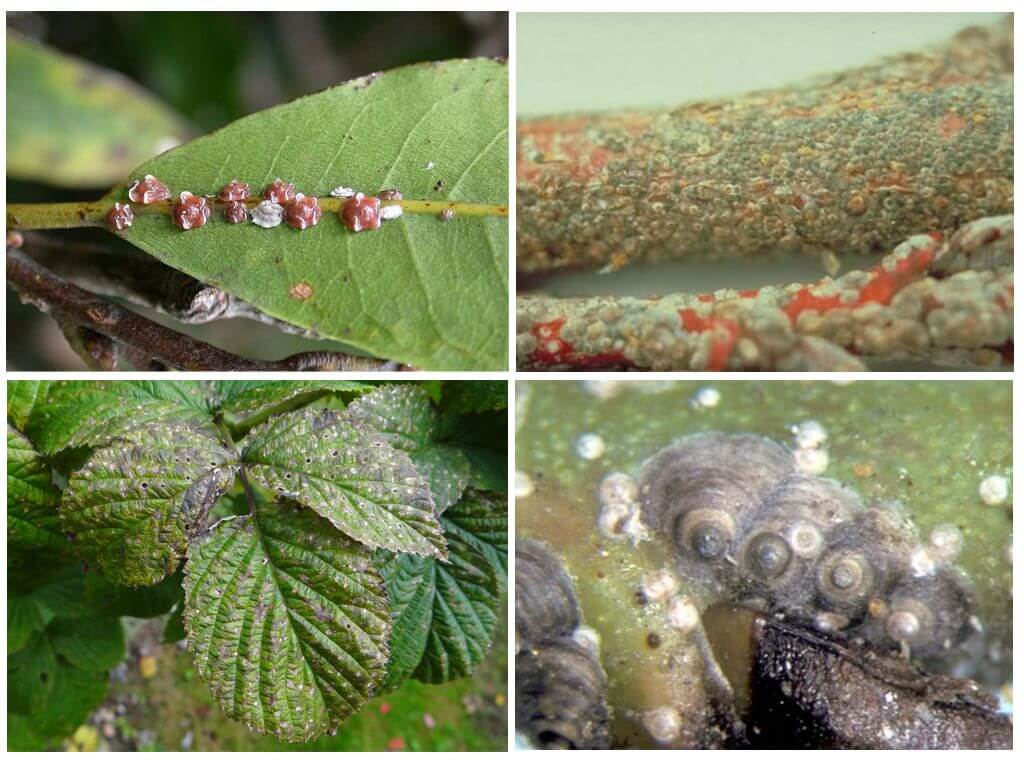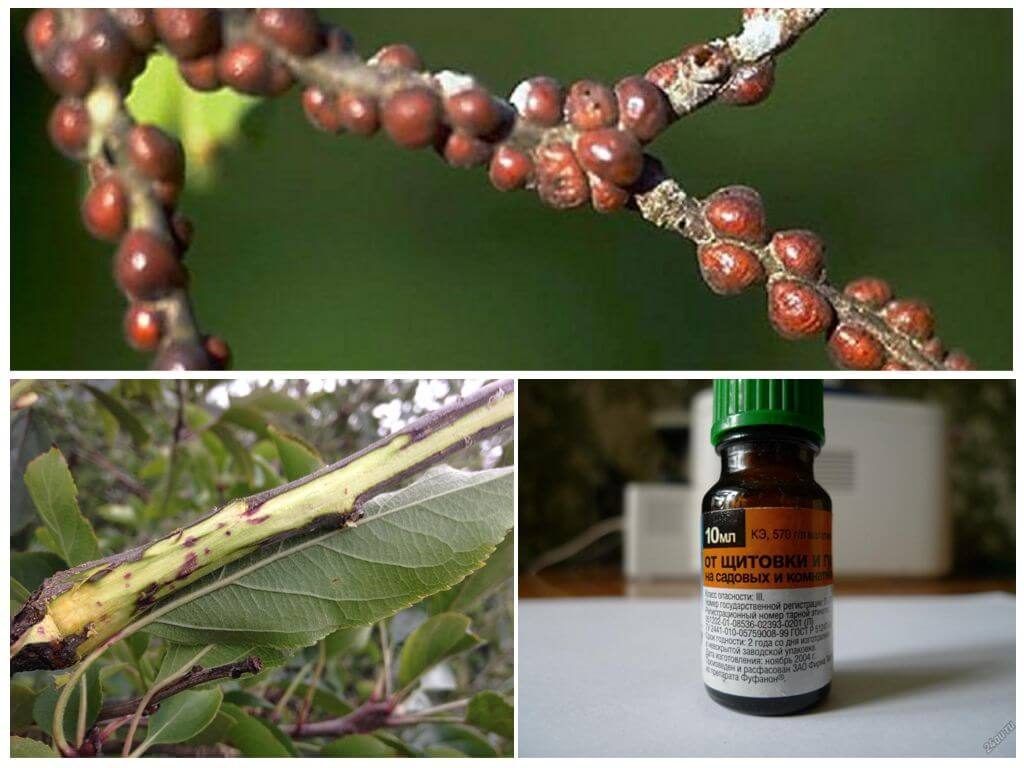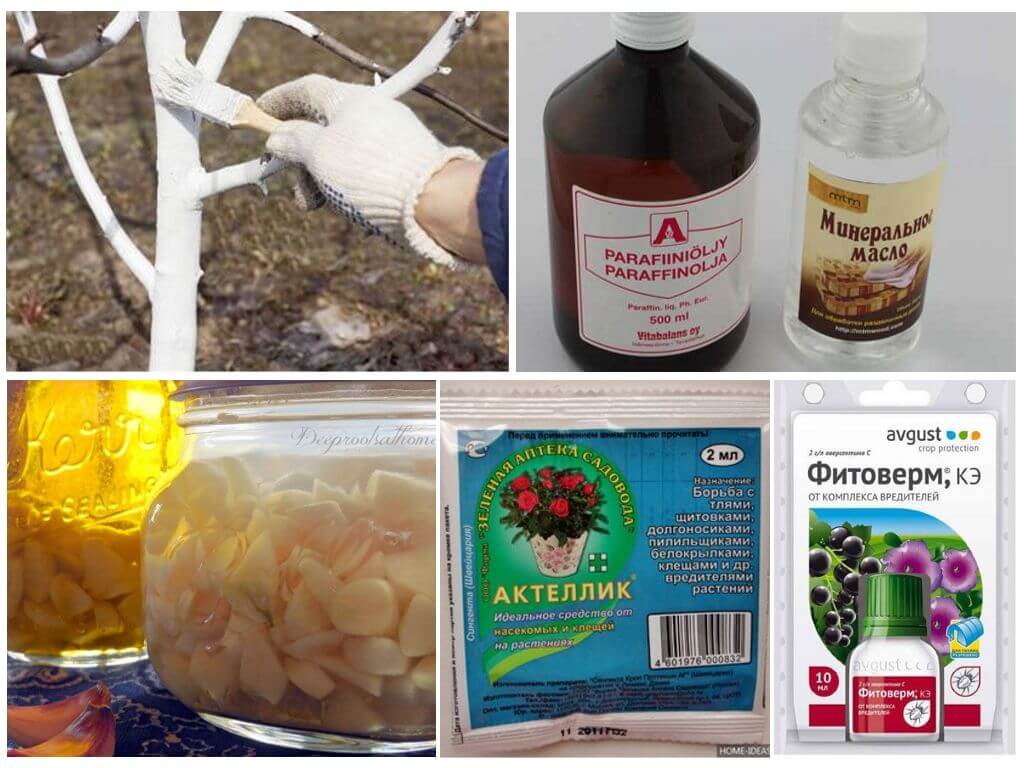California shield
Content
- California shield
- Signs of infection with the shield
- Ways to destroy the pest
- Means of fighting the shield
The California Schmitovka parasitizes fruit crops. Small insect affects cherry, apricot, pear, plum, apple. Often have to to fight with shields on currants and grapes. Thousands of colony of scales protect the leaves, trunks, branches, fruits.
Appearance
Californian shchitovka reaches in size 2.5 mm. The appearance of males is significantly different from females:
- Females are deprived of legs, wings, the body is covered by a dense, durable shell - a shield. The female leads a still life. Its main purpose is to lay eggs, give birth to a new generation. The coloring of the females is approaching a dirty gray tint. The convex shape of the body resembles a wart, scales, plaque.
- Males reach sizes of 2 mm. They have legs, wings, move well from one plant to another. On the head you can see the big purple eyes. The size of a guard reaches 1 mm. During the mating season, the male drops the flap. After a few days dies.
- Calypian larvae have several stages of development. Small, up to 0.3 mm, moving bugs are born. They are also called vagrants. In search of a place convenient for themselves, they crawl all over the plant, significantly increasing the degree of infection.
Within 22 days go through several stages of development. The nymph of the last generation is a fixed larva with a rounded shape. At this stage, the flap is formed. Body color is dark brown or black.
Photos of the Californian shitovki of different sexes can be seen below.
Reproduction, life cycle
The California shchitovka is active in the warm season. For the whole season, 2 generations of larvae have time to reproduce. One female lays about 100 eggs. They develop under the shelter of a durable shell. The female dies, and small, mobile bugs appear from the eggs. Larvae feed on pulp and juice of the leaves of the plant.
After 22 days, the nymphs become motionless, acquire their own shields. At this stage mating ability develops. Males shed shields, females after fertilization become immobile, tightly attached to the branches, trunks of trees.
On a note!
The larvae, which were born at the end of July-August, remain to winter. Durable shield protects them from negative external influences. The larva easily tolerates temperatures below 30 degrees Celsius.
With the onset of spring, the movement of sap in trees is activated, the larvae wake up. Complete their stage of development. Already at the end of March, the plants are infected with dangerous bugs.
Signs of infection
You can notice the presence of Californian shchitki by the appearance of the plant:
- Leaves form gray, light brown scales.An attempt to separate the "warts" fails. Such tenacity indicates the presence of adults on the tree.
- With careful examination of the culture from the back of the leaves are visible small moving bugs - the larvae. This suggests that females have successfully given birth to a new generation. In early August, the peak of infection will happen.
- With a strong infection with numerous scales covered branches, trunk. Dark, red spots are formed on the damaged areas of wood.
- The bark loses its natural luster, and the plant itself loses its vitality, since all the energy goes to restore the bark.
- The presence on the culture of developing larvae leads to deformation, gluing, falling off of the leaves. On the branches, trunks drip juice.
- Inflorescences develop poorly, fall off. Yield decreases.
In the absence of due attention from the person the culture gradually dries out. Severe contamination of the site with the California shield protects with the disappearance of the whole garden in a couple of years.
Methods of struggle
Getting rid of the Californian Scout is quite difficult.The reason for this is a durable shell that reliably protects the adult insect, the larvae in the last stage from the negative impact of environmental factors, insecticides. Pests can be eliminated either in early spring or during the period of the appearance of strollers.
On a note!
Funds based on contact action substances are absolutely useless. The insecticide does not penetrate the shield, and adult females, the last generation of nymphs, do not move across the surface of the plant.
It is recommended to use the systemic or intestinal action. The active ingredients enter the plant sap, and then enter the body of pests through nutrition.
However, the use of insecticides is allowed only in early spring, before leafing, or in late autumn, after harvesting. During the flowering, ripening of the crop is recommended to use folk remedies.
On a note!
Reduce the number of California plateau can be mechanically. Cut off the bark, remove the leaves, break off the twigs. Then everyone is thrown into the fire.
Methods of dealing with the Californian shield are chosen based on the degree of infestation, the vegetation period, and their own preferences.
Means of struggle
For the destruction of pests used folk remedies, professional preparations.
- Smear trunks, tree branches with mineral oil. For a plant, the substance is harmless, safe for humans, to the shells blocks oxygen.
- With the defeat of the seedlings in the garden, the shields are cleaned with brushes, and the leaves are sprayed with soapy water. Laundry soap, tar, green is added to the water.
- Wood ash is diluted in water, soap is added, the plant is sprayed, and the soil is poured over it.
- To fight with a shield in the garden, prepare the tincture of garlic. Pour chopped garlic with cold water, insist day. Strain, add green soap, spend spraying.
- The best drug from the Californian scythes is Actellic. You can also use Aktar. The action persists for a month. If necessary, repeat spraying. But no later than 20 days before harvest.
- Fitovern is a representative of biologically active drugs. Not so fast. Spraying is required every week for a month. But safe for bees, man.Wash fruits well enough under running water.
If the area is highly contaminated, quarantine should be provided. Do not remove fruits, seedlings from the site. Keep active pest control for a year. Then in the next season will be able to get a good harvest.

